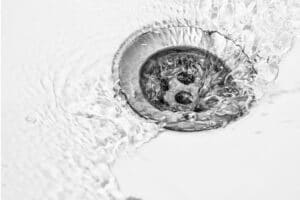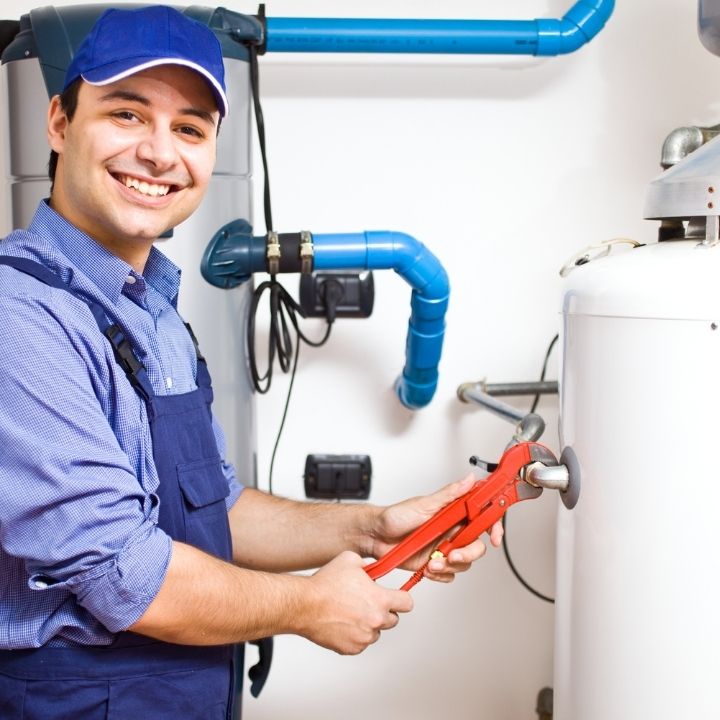Hey there, folks! It’s your friendly neighborhood plumber from Trenchless Sewer Plumbing in sunny Los Angeles. Today, we’re diving into a topic that might not be glamorous, but it’s super important for keeping your home running smoothly: clogged drains. We all know how annoying a clogged drain can be—bad smells, standing water, and potential damage. Yikes! Let’s get ahead of those problems by understanding what causes them and how to prevent them.
Common Causes of Clogged Drains
1. Food Waste
Let’s start with something we’re all guilty of—food waste. Your kitchen sink’s garbage disposal is handy, but it’s not invincible. Certain food items, like eggshells, coffee grounds, and fruit peels, can wreak havoc on your pipes.
- Solution: The best way to avoid this mess? Compost what you can and toss the rest in the trash.
2. Grease, Oil, and Fats
Pouring grease down the drain might seem harmless, especially if you’re running hot water, but it’s a recipe for disaster. Once it cools, it solidifies and clogs up your pipes. Instead, collect grease in a container and throw it out.
- Solution: If you do get a clog, a mix of hot water and detergent can help break it down—but don’t hesitate to call us if it gets stubborn!
3. Paper Products
Only toilet paper should go down your toilet, and even then, not in excess. Products like cotton swabs, wipes (even the “flushable” ones), diapers, and feminine hygiene products don’t dissolve and can cause serious blockages.
- Solution: Always have a trash can nearby for these items.
4. Hair
Human and pet hair can be major culprits, especially in the bathroom. Hair can bind with grease and other sticky stuff to form tough clogs.
- Solution: Using drain covers can help keep hair out of your pipes. And if you bathe your pets, try to do it outside whenever possible.
5. Soap Scum
Did you know soap can actually clog your drains? Soap scum builds up over time, reducing the diameter of your pipes and slowing down drainage.
- Solution: Switching to liquid soap or soap-free washes can help, and if you’re already dealing with buildup, pressure cleaning is a great solution.
6. Dental Floss, Hair, and Stringy Materials
These might seem harmless, but they can cause major clogs. Dental floss, hair, and other stringy materials knot up and combine with other debris.
- Solution: Prevent clogs by using hair strainers and disposing of floss in the trash.
7. Cat Litter
Cat litter might be designed to absorb moisture, but it can cause huge problems in your pipes.
- Solution: Always throw kitty litter in the trash—never flush it down the toilet or wash it down the drain.
8. Toys and Foreign Objects
If you’ve got kids, you know how toys can end up in the weirdest places—including your drains.
- Solution: Teach your little ones that toilets and sinks aren’t play areas, and use drain guards to catch any stray objects.
9. Mineral Buildup
If you live in an area with hard water (like we do in many parts of LA), mineral deposits can build up and clog your pipes.
- Solution: Regular hydro jetting can clear these deposits, and installing a water softener can prevent them from forming in the first place.
10. Tree Roots
- Tree roots seeking water can invade your sewer lines, causing serious clogs. If you notice multiple drains clogging at once, this might be the issue.
Solution: Plant trees away from your sewer lines and keep an eye out for any signs of trouble. Minor root clogs can be cleared with hydro jet cleaning.
11. Offset Pipes
Over time, the ground can shift, causing your pipes to move out of alignment. This is especially common in older homes with concrete and clay pipes.
- Solution: Upgrading your drain system can prevent this, and if you suspect an issue, give us a call—we’ll get it sorted out.
When to Call a Professional
Sometimes, DIY fixes just won’t cut it. If you notice slow-draining water or foul odors, it’s time to bring in the pros.
At Trenchless Sewer Plumbing, we’ve seen it all and we’re here to help you tackle any clog-related issues. Don’t wait until a minor problem turns into a major headache.
Keeping Your Drains Unclogged
There you have it, folks! By understanding the common causes of clogged drains and taking some simple preventive measures, you can keep your plumbing in tip-top shape.
If you ever run into trouble, you know who to call—Trenchless Sewer Plumbing, your go-to experts in Los Angeles. Stay clog-free, LA!
Got Clogged Drains? We Got You Covered!
Need help with a stubborn clog or want to ensure your pipes stay in great shape? Give Trenchless Sewer Plumbing a call today! Our expert team is ready to assist with all your plumbing needs, big or small. Don’t wait—contact us now and let us keep your home running smoothly!
While you’re here, check out our other informative blogs like Flush the Stress Away: Understanding and Resolving Toilet Overflow Issues. You’ll find a wealth of tips and tricks to keep your plumbing in perfect condition.




 Spring is finally here! If you’re anything like us you’ve probably been itching all winter to get some work done. Now that the weather is nice we’re sure your ready to get some cleaning done, but we recommend you join us in taking care of your plumbing this spring also. With a little effort now you can make sure that your plumbing will be good to go all summer long.
Spring is finally here! If you’re anything like us you’ve probably been itching all winter to get some work done. Now that the weather is nice we’re sure your ready to get some cleaning done, but we recommend you join us in taking care of your plumbing this spring also. With a little effort now you can make sure that your plumbing will be good to go all summer long.